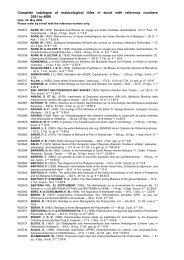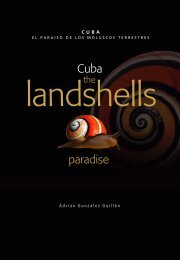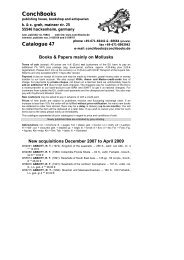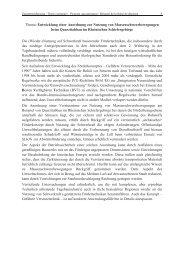Madeira Canary Islands Azores – Fishes Dr. Peter Wirtz
Madeira Canary Islands Azores – Fishes Dr. Peter Wirtz
Madeira Canary Islands Azores – Fishes Dr. Peter Wirtz
Create successful ePaper yourself
Turn your PDF publications into a flip-book with our unique Google optimized e-Paper software.
The Round sting ray is easily told apart from the Common sting ray (previous page): it has a much rounder<br />
outline of the body, a darker colour and a slightly flattened tail that carries a skin fold on the lower rear edge.<br />
Uniformly coloured animals are more common than spotted ones at <strong>Madeira</strong> and the <strong>Azores</strong>; spotted ones can<br />
frequently be seen at the <strong>Canary</strong> <strong>Islands</strong>. Photo <strong>Peter</strong> <strong>Wirtz</strong>.<br />
Butterfly rays (Gymnuridae)<br />
Butterfly ray (Gymnura altavela)<br />
Up to 2 m wing span. <strong>Madeira</strong>, <strong>Canary</strong> <strong>Islands</strong>. 0.5 <strong>–</strong> 70 m depth.<br />
Butterfly rays can easily be recognized by their peculiar body shape. They are often buried in the sand,<br />
sometimes already in a few cm water depth. They are related to sting rays and have two short spines on a very<br />
short tail. After a gestation period of about six months, two to seven young are born. Photo Pedro Monteiro.<br />
14<br />
Eagle rays (Myliobatidae)<br />
Eagle ray (Myliobatis aquila)<br />
Up to 1.1 m wing span. <strong>Madeira</strong>, <strong>Canary</strong> <strong>Islands</strong>, <strong>Azores</strong>. 1 <strong>–</strong> 200 m depth.<br />
Like sting rays, eagle rays carry one to two poisonous spines on the tail. The tail of the eagle ray is<br />
particularly long; a small dorsal fin stands at its beginning (absent in sting rays). Eagle rays move through the<br />
water beating their „wings“. They dig in sand and mud, in search of bivalves, which they can crush with their<br />
strong tooth plates. They probably can smell bivalves that are buried in the substrate. Females are larger than<br />
males; they give birth to five to seven young. Photo <strong>Peter</strong> <strong>Wirtz</strong>.









